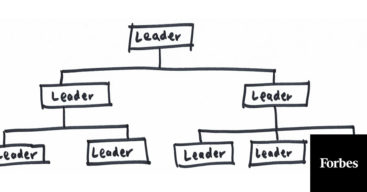Of all the jobs on a leader’s plate these days, perhaps none is more important than sensemaker. We’re all confronted with too much data and too many choices on a daily basis. We see countless potentially-valuable things we could do while only having time for a limited few. We’re so busy that we can’t see all the forces at play; we struggle to connect the dots. Thus, the heavy lifting of leadership has to be to help people connect those dots so they can make the smartest choices regarding where to spend time.
The best way to do this is through storytelling. Storytelling is powerful because it provides guidance without being prescriptive. Four stories in particular are the most helpful.
- Who are we? – This is a heritage story. When done well it takes us back to first principals. It reminds us of our founders’ mission and values and of the organization’s history. Furthermore, it reaffirms what we will and won’t do in order to succeed. It’s simple and instantly compelling. I did some work with the spirit company Pernod Ricard a few years back and Bryan Fry, their US president, was great at this. He would often reference the story of Paul Ricard travelling the French countryside with his eponymous spirit connecting with tavern owners. Fry would use the story to remind people of the power of personal connection and the need to forge that connection with everyone they did business with.
- Where are we going? – This is a vision story. When done well it paints a picture of the future. It puts us there. We understand not only what we will have achieved when we get there, but also how it will feel. We can see the impact. And we feel pulled towards it. I recently saw Steve Bock of Shinola tell an excellent where-are-we-going story at the World of Business Ideas conference. He started by painting a picture of the decline of American manufacturing, then telling the story about how Shinola is bringing it back. Their current focus is handcrafted watches, bicycles and leather goods, with more product categories to come. Instantly you could see a future with clothing, other household products etc where handcrafting would be appreciated. I found myself wanting to be a part of it.
- Where are we now? – This a reality-check story. When done well it creates a healthy tension with the where-are-we-going story, inspiring people to get up and get moving. It brings our strengths and weaknesses to life. It indicates the distance we need to travel, setting the stage for our next steps. Al Pacino delivers one of my favorite where-are-we-now stories in the football movie Any Given Sunday. He pulls no punches in his assessment of the teams current struggles using it to light a fire underneath them.
- How do we get from here to there? – This is a practical action story. When done well it reduces anxiety about the road ahead. People see a path forward. Even if difficult, it looks doable. This story should not only clarify what we will do, but also what we won’t do, setting clear priorities. The best way to tell this story is to force yourself / your team to pick three things you need to do to get to where you’re going, in a finite time period. Then string those three things together in a story. Sounds simple, but it works.
It’s worth noting that it is not necessarily leader’s job to define all these stories on her own. Other members of the organization must provide input and help to craft. However, it is the leader’s job to ensure that these stories get crafted, and then to tell them over and over again to provide context and guidance for decisions and action.



